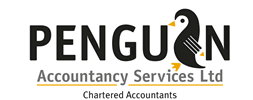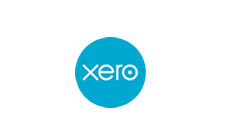The tax pros and cons of benefits vs dividends
As an owner manager of a company, taking income from it in the most tax and NI-efficient way is probably near the top of your list. The general view is that dividends are the best option, but when might benefits in kind trump them?

Profit extraction
Benefits in kind are one of the three main methods for director shareholders to extract income from their company. Except in one situation (see The next step ), benefits are more tax/NI efficient than salary, but generally, though not always, less tax efficient than dividends.
Benefits have an advantage over dividends because a company can provide them to a director even if it is loss making. This makes them a useful alternative or addition to salary in the early years of a company’s trading when it may not have enough profits from which it can pay sufficient dividends to meet a director shareholder’s needs.
When are benefits more tax efficient?
Benefits are more tax efficient than dividends where they are exempt from tax and NI in the hands of the director shareholder (see The next step ). Not only is there no tax for the recipient to pay but the company receives a tax deduction for them. The following tables compare the overall tax positions of a company providing an exempt benefit in kind compared with a dividend of an equal value.
| Company (£) | Director shareholder (£) | |
| Benefit in kind | 1,000 | 1,000 |
| Corporation tax (CT) relief at 19% | -190 | |
| Net cost to company | 810 | |
| Net value to director | 1,000 | |
| Dividend | 1,000 | 1,000 |
| Minimum director's income tax | -88 | |
| Net cost to company | 1,000 | |
| Net value to director | 912 |
The figures assume the company pays tax at the small profits rate of 19% and the whole dividend is taxed at the dividend basic rate. Both the director shareholder and the company are better off with a benefit in kind rather than a dividend. The tax savings would be even greater where the company pays CT at the main or marginal rate, or the director is a higher or additional rate taxpayer.
When are benefits less tax efficient?
Generally, benefits which are taxable and liable to NI are less tax efficient than a dividend of the same value as the table below shows. However, where special rules apply for working out the taxable benefit resulting in a low taxable amount, e.g. zero or low emissions company cars, a benefit in kind might still edge a dividend for tax efficiency.
| Company (£) | Director shareholder (£) | |
| Benefit in kind | 1,000 | 1,000 |
| Class 1A NI (13.8%) | 138 | |
| Corporation tax relief (19% ) | -216 | |
| Director-shareholder’s income tax | -200 | |
| Net cost to company | 922 | |
| Net value to director | 800 | |
| Dividend | 1,000 | 1,000 |
| Director's income tax | -88 | |
| Net cost to company | 1,000 | |
| Net value to director | 912 |
Related Topics
-
Planning ahead for pension salary sacrifice changes
From 6 April 2029, both employers and employees will be required to pay Class 1 NI on pension contributions in excess of £2,000 made through a salary sacrifice arrangement. What can you do about it?
-
Can you claim input tax on costs linked to electric cars?
Your business intends to go green and buy new electric cars. Can you claim input tax on the purchase of the vehicles and their subsequent fuel costs? Additionally, what recent change has been announced by HMRC?
-
Dodging the 2027 IHT and pension changes
In a little over a year the inheritance tax (IHT) exemption for unused pension savings comes to an end. If you’re married or in a civil partnership, one simple step might save your estate thousands in IHT. What is it?






 This website uses both its own and third-party cookies to analyze our services and navigation on our website in order to improve its contents (analytical purposes: measure visits and sources of web traffic). The legal basis is the consent of the user, except in the case of basic cookies, which are essential to navigate this website.
This website uses both its own and third-party cookies to analyze our services and navigation on our website in order to improve its contents (analytical purposes: measure visits and sources of web traffic). The legal basis is the consent of the user, except in the case of basic cookies, which are essential to navigate this website.